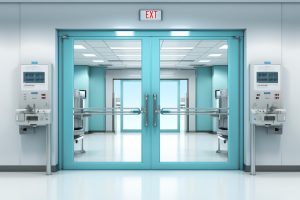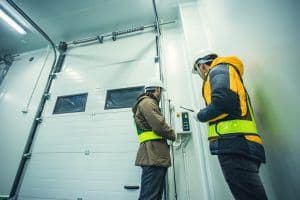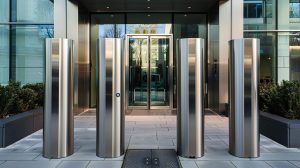World Day For International Justice: The Role of Security Systems In Ensuring Justice Reigns Supreme
17 July, 2024
World Day for International Justice, also known as International Justice Day, is observed annually on July 17th.
The purpose of World Day for International Justice is to promote international criminal justice and support the work of the ICC. It is a day to recognize the efforts to hold accountable those who commit serious crimes, reinforce the commitment to justice, and highlight the importance of a fair and impartial judicial system in achieving peace and security worldwide.
As security champions, and partners for many entities within the criminal justice system, Safetell is proud to look back on three decades of support, research and development that has helped us enhance the safety of the UK’s courthouses, police stations, prisons, and other official buildings.
From courthouses and police stations to prisons, these environments require robust security measures to ensure the safety of staff, visitors, and detainees. Let’s take a closer look at the role of security measures in keeping the wheels of justice turning.
Challenges That Justice Facilities Face
Justice buildings, such as courthouses, police stations, and prisons, face numerous security challenges due to their sensitive nature and the critical role they play in maintaining law and order. These challenges stem from the need to protect individuals, sensitive information, and infrastructure while ensuring justice is served. Some of the key security challenges include:
- Public and Personnel Safety: Justice buildings often deal with high-risk individuals, including violent criminals and disgruntled litigants. Ensuring the safety of judges, lawyers, staff, and the public is paramount.
- Physical Security: Buildings need to be fortified against attacks, requiring bullet-resistant barriers, secure doors, and reinforced windows to protect against shootings or physical assaults.
- Unauthorised Entry: Preventing unauthorised individuals from entering secure areas is crucial. This includes managing access to courtrooms, judge’s chambers, evidence rooms, and other sensitive areas.
- Visitor Management: Handling the large number of visitors, including family members of defendants, media, and the general public, requires robust visitor management systems to track and control access.
- Contraband smuggling: Ensuring that no prohibited items are brought into courtrooms or police stations is also vital to maintaining safety.
- Evidence Handling: Securely handling and transferring evidence between crime scenes, storage, and courtrooms to prevent tampering or loss.
- Terrorism: Justice buildings can be targets for terrorist attacks due to their symbolic importance. Measures must be in place to protect against such threats.
- Protests and Civil Unrest: Managing protests and demonstrations outside justice buildings without compromising security or disrupting operations.
These buildings also need to balance security needs with accessibility requirements. This includes complying with regulations such as the Equality Act 2010, ensuring facilities are accessible to individuals with disabilities, while ensuring the safety of the public, staff, and other individuals. Maintaining a welcoming and non-intimidating environment, especially in public-facing areas like police station reception desks and courthouse lobbies, while ensuring security can be challenging.
The Role of Security Systems In Keeping Justice Buildings Safe
Addressing these challenges requires a comprehensive approach that combines physical security measures, technology, staff training, and emergency preparedness to create a safe and secure environment for administering justice. Advanced security solutions, like those provided by Safetell, play a crucial role in meeting these needs by offering tailored products and services designed to protect justice facilities and ensure the safety of everyone involved.
Bullet Resistant Screens, Doors and Counters
Screens and doors play a crucial role in protecting staff in justice buildings by creating physical barriers that prevent unauthorised access, physical attacks, and other security threats.
Products like the bullet-resistant MKII framework provides protection against physical and ballistic attacks, ensuring the safety of judges, lawyers, staff, and the public, while adjustable anti-physical attack sash-style security windows increase protection during high-risk interactions. These screens are designed to withstand ballistic attacks, providing a protective barrier between staff and potential threats. This is particularly important in areas where staff interact with the public, such as reception desks or payment counters.
Steel stalwart doors offer significant bullet, blast, fire, and manual attack resistance, providing critical protection for entrances and sensitive areas.
Physical Security
Justice buildings often require specific areas to be more secure than others, such as courtrooms, evidence storage rooms, and detention facilities. As terrorist attacks are always of concern, robust walling systems can contain and mitigate blast impact in the event of an explosive attack, protecting both the structural integrity of the building and the lives of those inside. This capability is crucial for justice buildings, which can be high-profile targets for such attacks.
Security systems reinforced with anti-physical attack steel-framed security glazing protects staff and individuals in custody against ballistic attacks and physical assaults, while a product such as the CityWall modular walling system fortifies areas within the building against physical attack. These walls can withstand significant physical force, protecting against attempts to breach secure areas. The modular nature of the CityWall system means it can be adapted and reconfigured as needed. This flexibility is invaluable in dynamic environments where security needs may change over time, allowing for quick adjustments to fortify different areas as required.
Entrance Control
Entrance control is crucial for justice buildings such as courthouses, police stations, and prisons, ensuring the safety and security of the facility, staff, visitors, and the overall judicial process. While justice buildings must remain accessible to the public, including litigants, witnesses, and media, it is essential to control and monitor who enters and exits to prevent unauthorised individuals from gaining access.
Entrance control speed gates, security pass doors, and high-security solutions like circle security portals provide an aesthetically pleasing solution to manage pedestrian traffic and prevent unauthorised access.
By funnelling all visitors through controlled entry points, security personnel can perform necessary checks and monitor the flow of individuals entering the building. This helps prevent the entry of individuals who may pose a threat.
Conclusion
Safetell supports justice facilities by providing comprehensive security solutions designed to address the unique challenges faced by courthouses, police stations, and prisons.
With a robust range of products, including bullet-resistant screens, secure doors, advanced entrance control systems, and modular walling, Safetell enhances the safety and security of these critical environments. Their expertise ensures that justice buildings can effectively protect staff, visitors, and detainees, manage access and prevent unauthorised entry, and maintain a secure yet accessible environment, thereby upholding the integrity and efficiency of the judicial process.












